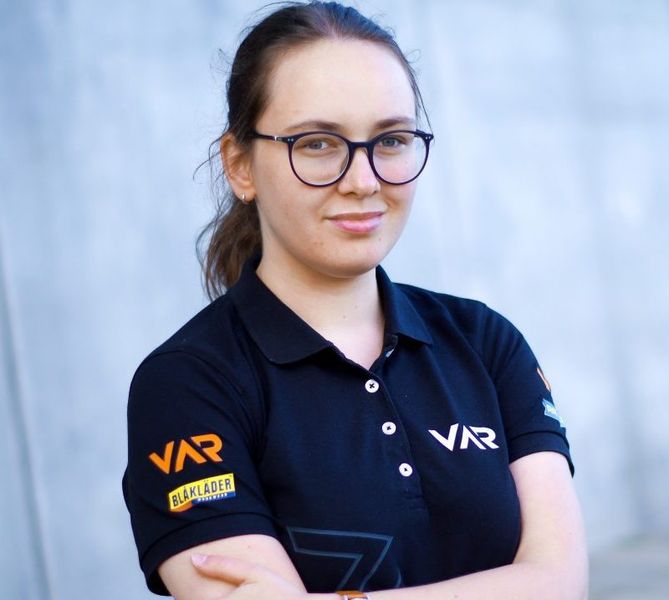
Julia Baldya was born and raised in Poland.
She left her home country a couple of years ago to study Electrical Engineering and Automotive Systems at TU Berlin. In search for an exciting career path, Julia decided to give motorsport a try because an office job was not exactly what she wanted to do. She was able to land an internship at Van Amersfoort Racing in the Netherlands, where she currently works as data engineer.
Her job consists of monitoring the parameters of the car (“vitals”), analyzing errors and failures, and aiding the race engineer, i.e. the main engineer responsible for the car set-up and driver’s performance during tests and races.
During her internship, she participated in a cooperation project between her team and Ultimaker, making a case study of the application of 3D printing in a racing team.
Nora Touré: Julia, could you let us know briefly about your background and how you came across additive manufacturing?
Julia Baldyga: I was, and I am still a student of TU Berlin, while I work for the VAR part-time this year (counting the days to submitting my master’s thesis in December!). Before the adventure with motorsport and 3D printing, I graduated in Electrical Engineering and chose more multidisciplinary studies for my master’s degree, that would at the same time focus on electrical and automotive engineering.
I chose Automotive Systems and I did a course on CAD in Automotive Industry, among others. This is where I learned CATIA and manufacturing processes. I haven’t used those skills before – in my previous student job, as a control systems engineer for a much bigger automotive company, I was involved in mathematical modelling, simulation and testing of mechatronic components.
The relatively small size of my current team requires a person to take up more diverse tasks, for which you might need to learn new things.
Nora Touré: You were involved in the 3D printing project of Van Amersfoort Racing. Can you tell us what this was about?
Julia Baldyga: Van Amersfoort Racing is a Formula 3 and Formula 4 race team. It leads young drivers on their way to success in single seater racing series such as F1, F2, FE or WEC. The team has been using the 3D printing technology for a couple of years for rapid prototyping mostly. Because, as every team, we are on tight budget, we need to make sure that the parts we produce are going to fit the car well.
There are sometimes 3-4 iterations of a designed part before it gets green light and can be sent for CNC machining or water cutting. This is in many industries the most standard use of 3D printed parts. However, during the project I participated in, we decided to check whether there are applications of 3D printed parts directly on the race car. And, especially after discovering the reinforced materials (with carbon fiber or glass fiber), there were!
I am behind the idea of 3D printing the halo. The story is: I entered the team at the same time the Tatuus T318 cars with halo were introduces to the junior categories for safety reasons. I remember seeing the item on the to do list of my chief engineer: “find a solution for the halo in the simulator”. We checked the price of a real halo, but with its qualities, it was of course too expensive (and heavy). It also wouldn’t exactly fit the simulator monocoque. So I suggested 3D printing the halo (without the idea of wrapping it in carbon just yet).
I made the first design, that was later reiterated multiple times by the Ultimaker application engineer, which was an invaluable help and a fun process, before it was steady and presentable. The idea of wrapping the plastic in carbon fiber came along the way, to give the part a smooth look and reinforce the stability and durability. It really resembled the real halo in the end, as you can see in the video. We even worked with a real racing driver on that, asking for feedback on the design and comparison between the field of view in the real car and in the simulator.
Read the rest at Women in 3D Printing
